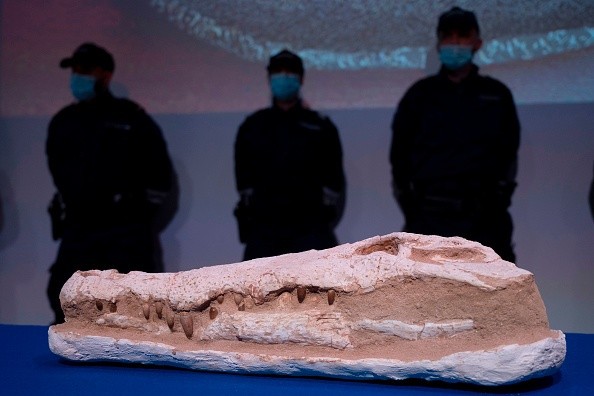The partially petrified bones of a large ancient crocodilian that may have been ritually decapitated provide insight into how present crocodilian species may have developed.
The new species, discovered in southern China, is believed to have been 6 meters long and the top predator in its ecosystem.
Only a few hundred years ago, human migration into southern China and consequent hunting may have driven it to extinction.
The finding might influence our understanding of ancient Chinese civilization.

According to ScienceDaily, the residents of the Han River delta in the southern Chinese province of Guangdong had a crocodilian issue in the ninth century, under China's Tang dynasty or, depending on your point of view, the local crocodilians had a human problem.
According to legend, Han Yu, a government official and poet, attempted to warn the crocodilians and even offered a pig and a goat to persuade them to leave the region.
Unfortunately, the crocodilians, being unable to identify these threats, persisted and, according to fresh evidence, met their end.
Twelve centuries later, Professor Minoru Yoneda of the University of Tokyo, research fellow Masaya Iijima of Nagoya University Museum, and Professor Jun Liu of the Hefei University of Technology in China found themselves examining two partly petrified, or subfossil, individuals from a new species.
The creatures were most likely slain in the 14th and 10th centuries B.C., thus they were not the victims of Han Yu, but their presence is linked to his narrative, so the researchers named this new species Hanyusuchus sinensis after him.
The authors linked the fatal wounds to weaponry from the time period in question.
As per Dailymail, Given that the two specimens we have were murdered by humans, the species is no longer alive, and due to the historical evidence of systematic crocodilian mass executions in the region, the conclusion must be that humans are to blame for the extinction of Hanyusuchus sinensis said, Professor Yoneda.
Crocodilians are apex predators that play an important role in the preservation of freshwater habitats. This ancient crocodilian fight serves as a cautionary tale for humanity today.
Also Read: Northern Territory's Crocodile Population Suddenly Increases After Pushed to the Verge of Extinction
The bones are really from Hanyusuchus sinensis?
Hanyusuchus sinensis is a kind of gharial, but what makes it interesting is that it shares several essential skull traits with the other crocodilians.
This is crucial because it might put an end to a decades-long argument about how, when, and how crocodilians developed into the three groups that still walk the Earth today.
Any species deemed a "missing link" is always noteworthy, but Hanyusuchus sinensis is remarkable for other reasons as well, most notably that it appears to have been pushed to extinction by humans.
Both subfossil gharial fossils revealed substantial evidence of severe assaults, including beheading.
The authors linked the fatal wounds to weaponry from the time period in question.
These bones, discovered in various parts of China, were considered to belong to the Chinese alligator (Alligator sinensis), which was exclusively present in the lower Yangtze River area in east-central China.
This might be proof of cultural impact from south to north China, but the current finding may call this into question.
According to Yoneda, he is not alone in believing that the Chinese gharial, Hanyusuchus sinensis, may have left some effects on ancient Chinese civilization.
This magnificent reptile may have impacted certain Chinese characters and possibly beliefs about dragons. It was the sole reptile that preyed on humans in ancient China.
© 2026 NatureWorldNews.com All rights reserved. Do not reproduce without permission.





